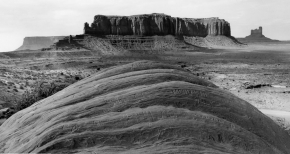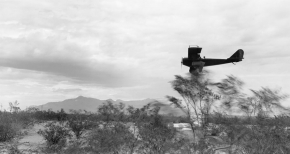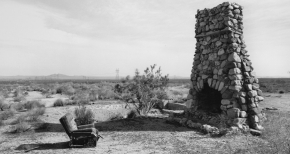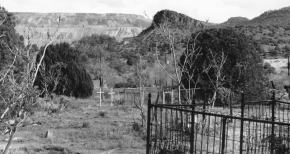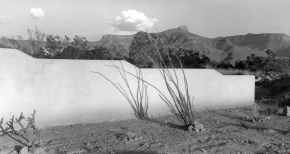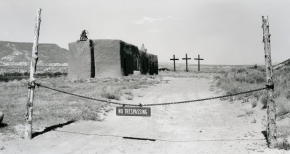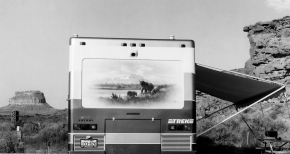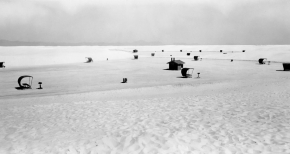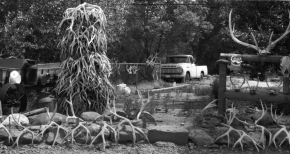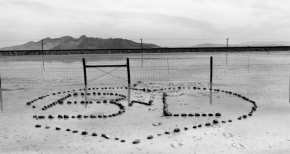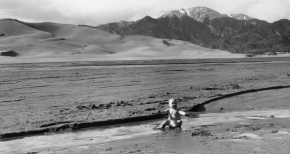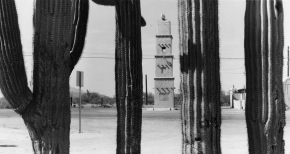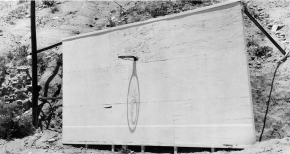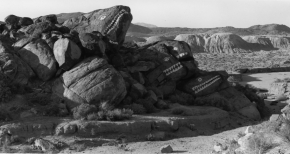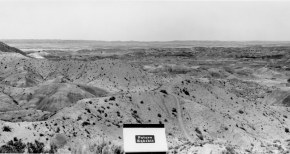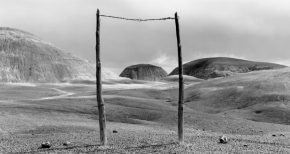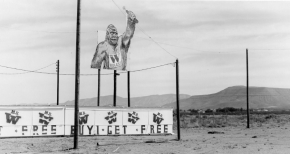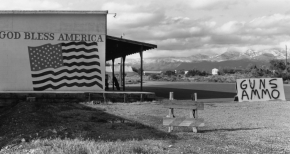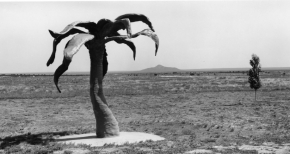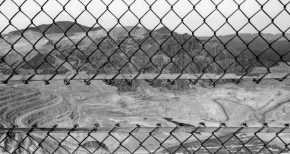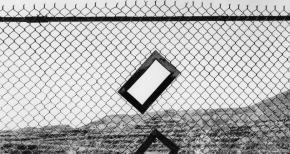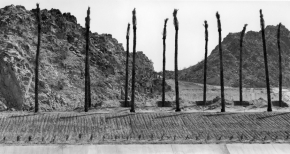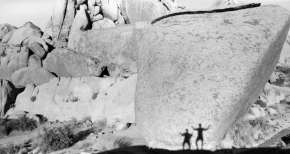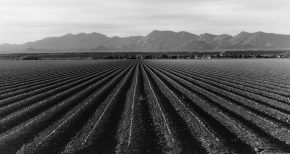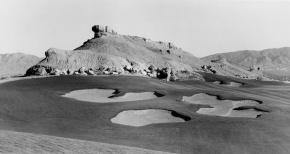The Way Out West
The photographs from The Way Out West chart my responses to the Southwest landscape in which humans have insinuated themselves throughout history. Specifically, I seek to juxtapose 19th century art historical notions of the sublime landscape with the ways in which we live on the land today, and thus to draw attention to our uneasy alliance with the natural world. Through this work I attempt to present a range of possibilities for these interactions. At times we appear oppositional and destructive to the land in which we live and at other times harmonious and custodial. I am interested in the myriad forms this relationship takes; humorous, ironic, dangerous, and fatalistic to list a few. The frame of the camera allows me to isolate and organize elements in the landscape which reflect our complex interactions with the land, both mythical and actual.
These photographs are portraits of the land constructed and altered by human presence. Our collective cultural imprint on this geographic region is staggering. There are enticing remnants from its earliest indigenous inhabitants as well as signatures on rocks by early American pioneers looking for a better life, spurred on by Manifest Destiny. The term, "Go West," has come to symbolize the quest for freedom and opportunity. Now, with the construction of mega cities in the desert, the southwest is still viewed as a place to reinvent oneself, despite the obvious environmental damage that occurs when we choose to do so.
I intend my images to be as much about the invisible threads that connect us as they are visible artifacts of a contested terrain.
The Way Out West images were taken between 1986 and 2006. The prints are toned gelatin silver prints.
